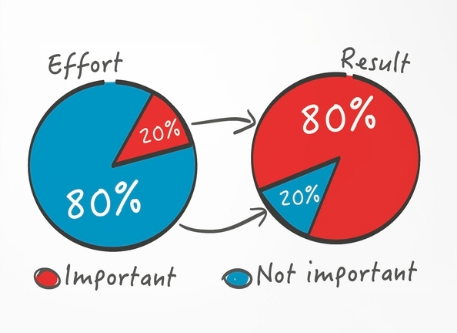Distinguish Your Company’s Elite: Follow the Pareto Principle

Even in America, not all customers are created equal.
If you apply the “Pareto Principle” to your sales department, you’re likely to make two discoveries: 80% of your
| Without a strategy for concentrating on your trophy clientele and putting the rest on the back burner, you could be spinning your wheels to meet the demands of the most troublesome, least profitable customers. |
revenue comes from 20% of your customers and 80% of your sales are generated by 20% of your sales team. The ratio varies by industry, and for some companies, the concentration of results is extreme:
- 0.5% of car rental customers rent some 24% of cars,
- 25% to 30% of customers at some banks account for every nickel of profit.
In high-transaction businesses — financial services, retail and travel, for example — it’s important to efficiently allocate sales, marketing and customer service resources to beef up relationships with the most important customers. Your long-term success hinges on strengthening the loyalty of these valuable customers. In fact, some companies have even adopted a policy of “firing” their least profitable customers and found an enormous boost in both the corporate bottom line and their employees’ satisfaction.
Here are four principles to make your staff smarter and more successful at swelling your revenue stream.
1. Pamper your top buyers. This will pay dividends in the long run. For example, preferred customer packages at a hotel could include fast check-in, rooms based on past preferences and other perks. Customers at a service station who buy a certain amount of gasoline a year might be offered a free oil change. This 20% group is most likely to recommend your business to family, friends and colleagues.
2. Know your real estate. Focus on the areas of your business that produce the most sales. Take a tip from McDonald’s. The fast food chain pares its menu so that it offers only what sold. That let McDonald’s focus on quickly serving just what customers wanted.
3. Target your marketing. Some ads just don’t pay off. In fact, 80% of your new leads probably come from 20% of your ad spending. Direct mail has a broad reach but often winds up in the trash. Target your top customers with media ads, e-mail and cell phone alerts — and Internet leads.
4. Work smarter. Solve the 20% of problems that cause 80% of your troubles and you’ll see a big return. And small problems might just solve themselves when the bigger pieces are in place. Establish specific sales goals, plans for reaching them and clear responsibility for achieving them. Base the rewards, including commissions, on results.
Of course, you can’t ignore 80% of your clientele. But you can trim the amount of time and effort you spend on customers who aren’t motivated to buy.
This doesn’t mean you should forget them, but if you’re going to focus on your trophy customers, you need to find the extra time somewhere. Try to keep your entire customer base motivated — and informed — with newsletters, brochures and e-mails. Offer incentives to come back. And be sure to notice when some of those customers drift into the top 20%. Although they don’t belong to your elite, they have potential.
| The Pareto Principle in ActionVilfredo Pareto was a 19th-century Italian economist who found that 80% of the world’s wealth belonged to 20% of its population. In modern business, the 80/20 rule is applied in a variety of situations, including: 80% of company problems come from 20% of troublemakers (people, machines or situations). 80% of a manager’s time is paper work, 20% managing. 80% of customer problems come from 20% of customers. 80% of personnel problems come from 20% of employees. 80% of your results come from 20% of your effort. |








